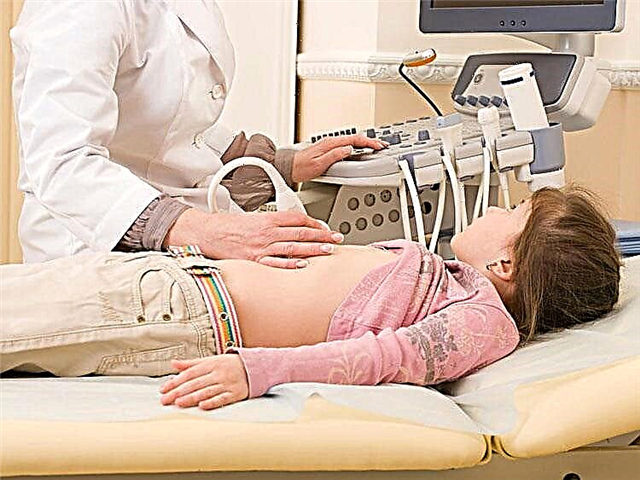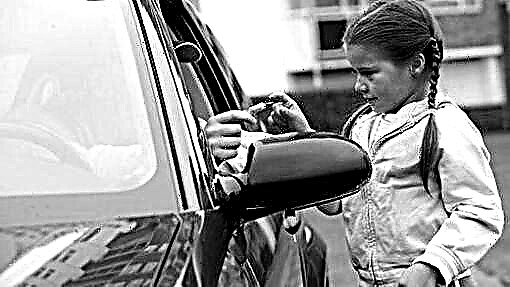Breathing is the most important function of the body, the violation of which can lead to the death of a person. Newborns are particularly at risk because the infant's respiratory system is imperfect and is only just undergoing final development. Not surprisingly, parents often listen to their baby's breathing. It is important to understand that this process in babies does not happen in the same way as in adults.

Baby's breathing is the most important vital indicator
The specificity of the respiratory system in newborns
Respiratory rate is the number of respiratory movements (one such movement is the inhalation-exhalation cycle) per minute (or other unit of time). This indicator is one of the main biomarkers.
In the first days and weeks of life, the baby's body is just beginning to adapt to external conditions. The respiratory system is no exception. At birth, cardiopulmonary functions undergo significant changes in the form of such an algorithm:
- fluid leaves the lungs, and the latter are filled with air, increase in volume;
- inflation of the lungs occurs, as a result of which the resistance in the vessels falls;
- blood flow in the lungs increases;
- the arterial and venous ducts are closed;
- the lungs begin to perform the respiratory function that the placenta previously performed.
On a note. As statistics show, the respiratory rate in newborns exceeds the same indicator in adults by about three times. Irregular breathing in young children is considered a normal variant. However, it will not be superfluous to consult a doctor.
An important feature of newborns is that they are unable to breathe through their mouths, they cannot blow their nose, and they cannot consciously hold their breath. These properties largely determine the type of intermittent breathing in newborns.
The respiratory rate (respiratory rate) in newborns may vary depending on whether the infant is asleep or awake. In addition, the change in sleep phases also affects breathing (the respiratory rate in a young child usually changes downward - up to 32-43 times per minute).
Premature babies have their own breathing characteristics:
- Breathing is uneven, rapid;
- Inhalation and exhalation can be separated by a rather long pause;
- Per minute NPV of a newborn varies from 36 to 82.
Short-term cessation of breathing, as well as its slowdown for newborn babies, is the norm.
Why measure your breathing rate
Determination of this indicator helps to establish how well ventilation is working.
Recommendation. Doctors advise measuring the respiratory rate for several days in a row, and recording the data obtained on paper. Such studies will detect possible deviations from the norm. If any were found, the data must be shown to the pediatrician.
This issue requires special attention, since deviations from the norm may indicate internal disorders, infectious diseases. For example, stopping breathing during sleep may be a sign of apnea (this condition causes temporary oxygen starvation of the brain, which, in turn, threatens the health of the child). Rapid breathing is often a symptom of internal pathologies of an infectious nature.
Important! Moderate breathing control is required not only for a premature baby, but also for a completely healthy baby.
If the doctor has come to the conclusion that the newborn needs constant monitoring of his breathing, most often they resort to using special breathing monitors. The functioning of the latter is as follows: if a baby (regardless of whether he is asleep or awake) experiences interruptions in breathing (slows down to 10 or less respiratory cycles per minute, or the duration of his pause is more than 12 seconds), a loud signal will sound and turn on red indicator. In this case, the child needs to be provided with emergency assistance to restore respiratory function.
How to measure your breathing rate
In order to understand how many times a child breathes per minute, breath is measured. The procedure should be carried out only in cases where the baby is completely calm. To do this, it is enough just to observe the rhythmic movements of the diaphragm. Another option is to place your hand on the baby's chest and count the number of cycles in one minute. So that the baby is not frightened and does not interfere with the process, it can be distracted with affectionate words or toys.
On a note. In hospitals, respiration is measured using a phonendoscope.

Measuring respiratory rate in infants
Respiratory rate for newborns
For the first time, the baby should inhale air after 30-90 seconds after birth. The next exhalation occurs along with the first cry.
The NPV in newborn babies is normally 40-60 times per minute. In a year, the child's NPV decreases and averages 33 respiratory movements in 60 seconds. Older children (5-7 years old) make about 20-25 respiratory movements per minute, and by the age of 10, these numbers decrease to 18-20 cycles per unit of time.
So, the number of breaths and exhalations per minute in a child depends on his age and is:
- 40-45 - up to 3 months;
- 35-40 - at 4-6 months;
- 30-35 - at 7-12 months;
- 25-30 - by the age of 3;
- 23-25 - by the age of 7;
- 18-20 - by the age of 10.
Obviously, as we grow up, breathing gradually slows down and fixes it at the same level (approximately 16-20 cycles per minute).
Possible reasons for deviations from the norms
One of the most common and harmless causes of breathing difficulties in an infant is nasal congestion. It can be caused by ordinary dirt or a runny nose. In either case, the baby's nose must be cleaned or rinsed. Cleaning should not be done with a cotton swab; it is better to do this with a wick twisted from cotton wool.
Other reasons for deviations from the norm include the following:
- Allergic reaction. Swelling in the nasopharynx interferes with normal breathing.
- The special structure of the nasopharynx is a congenital defect of the nasal septum or palate. In such cases, the baby has difficulty trying to inhale, which is why it can snore and snore. The baby's sleep is disturbed, the baby wakes up and cries.
- Adenoids. Pathology is congenital or acquired. In the latter case, the proliferation of tonsils in the nasopharynx can occur against the background of a cold. Treatment is carried out by an otolaryngologist.
- Respiratory tract infection. Most often characterized by rapid breathing. Symptoms also include other characteristic manifestations: wheezing, coughing.
- High body temperature. Usually leads to increased breathing and accelerated heart rate.
- Holding the breath in sleep for a short time. Such violations of the NPV of the newborn are the norm. If the symptom occurs often, and is also accompanied by other negative symptoms (cyanosis of the nasolabial triangle, loss of consciousness, asphyxia), then an ambulance must be called.

Apnea in an infant
What to do if your breathing rate rises
If the newborn's breathing becomes more frequent (that is, it becomes superficial), the cause may be a bacterial or viral disease (for example, pneumonia). Therefore, if a child has similar manifestations, it is necessary to check the baby for the presence of an infectious disease. If the diagnosis is confirmed, the baby is given proper treatment.
This condition has an official name - tachypnea. It is of two types:
- Transient. The state is transient, short-lived. It occurs due to the fact that at birth, fluid from the lungs is not removed. Breathing becomes shallow, wheezing, noise are observed, the child's skin can acquire a bluish tint. In most cases, it is not necessary to take any action to eliminate transient tachypnea. This condition goes away on its own after a couple of days. It is recommended to limit the child's fluid intake. If the manifestations are complicated by pulmonary and heart failure or other serious disorders, an urgent need to consult a doctor.
- Transient. This condition is not pathological, is characterized by a mild course and always ends in recovery. Respiratory distress lasts no more than 12 hours. Treatment in this case is not required. Concentrated oxygen can be used as a supportive measure.
Tachypnea often occurs in healthy babies as a result of stress, strong emotional stress (fear, joy, excitement). Exercise and high air temperature also lead to increased breathing. To eliminate this condition, it is necessary to protect the child from the influence of the listed factors, to calm the baby.
What not to do
If the baby has rapid breathing, it is better to refrain from any action and just observe the child's condition for 1-2 days. If breathing is not normalizing, it is best to see a pediatrician.
In order not to aggravate the situation, you should not:
- expose the baby to stress and anxiety;
- allow uncomfortable conditions in the nursery (in particular, high air temperature);
- allow excessive physical activity of the crumbs;
- self-medicate.
The respiratory system in infants has certain features that determine the baby's breathing rate. Imperfection of the respiratory function often becomes the cause of the development of various pathologies and disorders in the functioning of organs. Therefore, it is important to know how many breaths per minute a child has is the norm, and to try to pay special attention to the breathing rate of the baby in the first months of his life.



